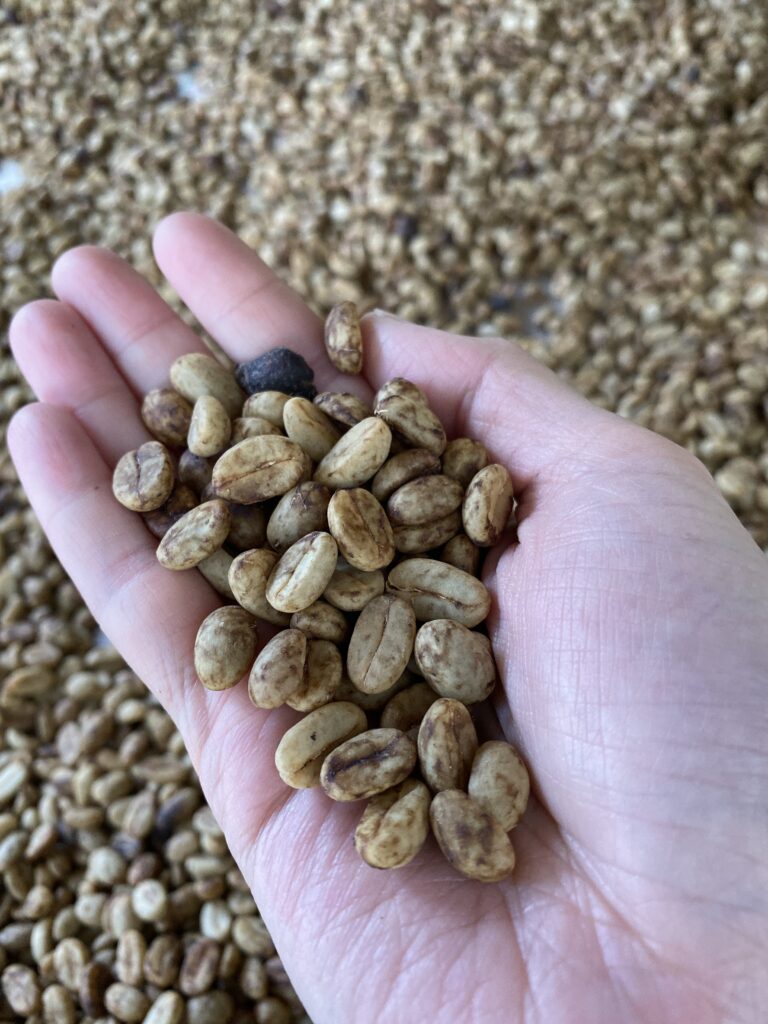A drying process where the skin and pulp of the coffee cherry are removed, but some or all of the mucilage remains.
The honey process, or semi-washed process, is a method of processing coffee beans that is a hybrid between the traditional wet process and the dry process.
In this method, the outer layers of the coffee cherry are removed using a pulper, similar to the wet process, but instead of washing away the mucilage (the sticky layer surrounding the bean), it is left to dry on the bean.
During the drying process, the mucilage on the bean will dry and harden, giving the beans a sticky or “honey-like” appearance, hence the name “honey process.” The beans are then dried on raised beds or patios, similar to the dry process. The drying period can take several weeks, and the beans are turned regularly to ensure even drying.

The honey process produces coffee beans with a unique flavor profile, which can be influenced by the amount of mucilage left on the beans, the drying conditions, and the variety of the coffee. It can produce coffee with a balanced sweetness, a medium to high acidity, and a full body. The honey process is considered as a specialty coffee and is usually sold as a single-origin coffee.
The honey process is particularly popular in countries like Costa Rica, Honduras, and Nicaragua. It is a relatively new method of processing coffee beans and is considered to be a sustainable option as it reduces water consumption and waste compared to the traditional wet process.
Do you have a term or definition you’d like us to add to the glossary? Let us know using this form.


